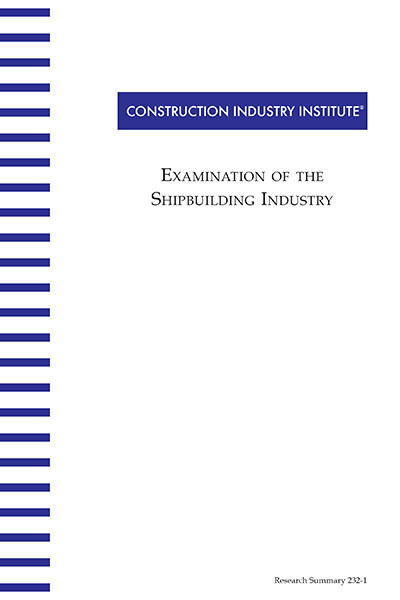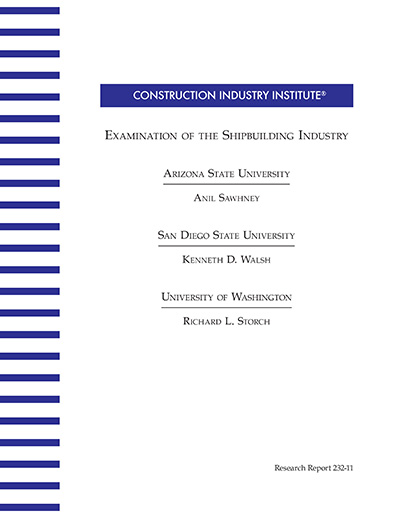
Examination of the Shipbuilding Industry
The global shipbuilding industry has undergone a dramatic transformation over the past two decades. The industry has reinvented itself from one that traditionally built one-off, stick-built constructed products to one that has introduced the use of standardization, modularization, automation, design reuse through product families and interim products, and extensive supply chain integration. The result is the achievement of providing low cost, short delivery products in a highly competitive, low margin marketplace.
While the U.S. shipbuilders dominated commercial shipbuilding worldwide as little as 50 years ago, it now maintains a small market share below one percent. Although commercial shipping has largely left U.S. shores, military shipbuilding has remained a domestic staple for the shipyards. Through the use of modularization, automation, and product families, the U.S. shipyards have been able to enjoy, to a small degree, the benefits of new technology and processes. However, the high degree of product variability and heavy customer interaction often negates many of these benefits.
CII funded this research effort with the primary objective to evaluate the practices and processes used by the industry leaders in Europe and Asia and to establish a list of those practices that have made the greatest impact in allowing these companies to achieve lower costs and shorter delivery schedules. The study compares a modern commercial ship design and assembly process map to several generic construction process maps. The resulting information outlines the key enablers necessary to implement a successful model of the shipbuilding industry to the construction industry.
The goal here is not to implement a solution, but to establish the characteristics by which the European and Asian shipbuilding industry evolved into worldwide leaders in the low cost, short delivery commercial ship market. This publication summarizes the research and points out key factors that might be transferable from shipbuilding to the engineering and construction industry.
The key differences between the construction industry and the shipbuilding industry are also believed to be the key enablers that allowed the ship building industry to excel. These key enablers were all classifieds as “hard” for the construction industry to adapt by the research team. These key enablers are: (RS232-1, p. 10)
- One company owning all processes
- High degree of design detail completion prior to construction
- One manufacturing/assembly location
- Design rules-based similar/stretchable components
- Design-build bid and award process
Additional enablers that were considered “moderate/easy” to apply in the construction industry are:
- Constructability considered during design phase
- Adaption of generic design rules
- Less owner interference during construction
- Supply chain integration through vertical integration
- Dedicated subcontractors and alliances
- Less relative product variability


